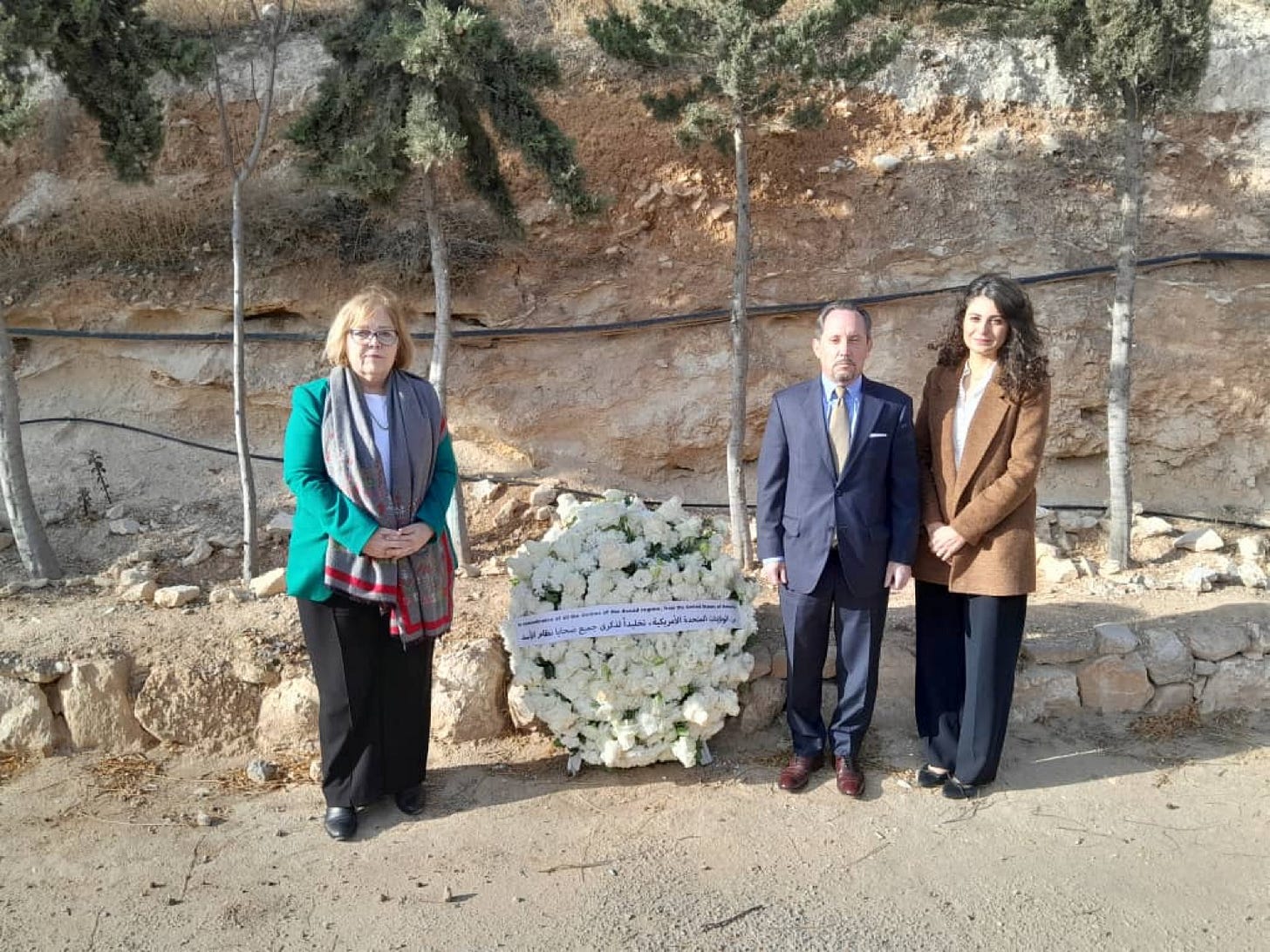US lifts bounty on Syrian rebel leader who helped oust Assad
HTS leader “committed” to “critical need to ensure terrorist groups cannot pose a threat inside of Syria or externally, including to the US and our partners in the region,” US diplomat Barbara Leaf.
American diplomats, on their first visit to the Syrian capital in 12 years, met with a Syrian rebel leader in Damascus today, two weeks after his group ousted Syrian dictator Bashar al-Assad. They said they were lifting a $10 million U.S. bounty on Ahmed al-Sharaa, the leader of Turkish-backed Hayat Tahrir al-Sham (HTS) and now Syria’s de facto interim ruler, after he committed to Syria not being a host for terrorist groups.
“Based on our discussion, I told him we would not be pursuing the Rewards for Justice reward offer that has been in effect for some years,” Assistant Secretary of State Barbara Leaf told journalists from Amman, Jordan today, after returning from Damascus with a delegation that included US hostage envoy Roger Carstens and senior State Department Syria advisor Daniel Rubinstein.
“The US is committed to working with the Syria people to help seize this historic opportunity,” Leaf said of her meeting with al-Sharaa. “We also discussed the critical need to ensure terrorist groups cannot pose a threat inside of Syria or externally, including to the US and our partners in the region.”
Al-Sharaa “committed to this,” Leaf said. But, she stressed: “We will judge by deeds, not just by words. Deeds are the critical thing.”
HTS had evolved from an al Qaeda-linked group, Al Nusra Front, but later fought against ISIS and Al Qaeda. The United States designated it a terrorist group in 2018.
Leaf declined to detail discussions on what conditions would need to be met to possibly lift crippling US economic sanctions on Syria.
Al-Sharaa “came across as pragmatic,” Leaf said. “It was a good first meeting.”
‘We’re one people’
Syrian civil society activists she met with stressed to the delegation that “Syrians want all Syrian communities to think of themselves as Syrians,” Leaf said.
Even representatives from Syrian minority groups stressed to their US interlocutors that they consider all Syrians “one people,” Leaf relayed. “’We want to think of ourselves as one people. We don’t want to be turned one against another in the way that the Assad regime did over the decades.’”
“What really struck all of us today in every engagement with Syrians is a very strong conviction that the new Syria is for Syrians to design, and the Syrian public wants …a seat at the table.”
Their trip, while short, “was a really important opportunity to engage with Syrians and hear from them directly during this watershed moment in Syria’s history,” Leaf said.
“I was truly inspired by the resilience and perseverance of the Syrian people we met today,” Leaf said. “No one understands the challenges ahead better than they do themselves.”
US hostage envoy: ‘Amazed’ at number of Assad secret prisons
“I've been rather amazed at the amount of secret prisons that Assad seems to have amassed,” US hostage envoy Roger Carstens said on the call. “I think initially we thought there'd be maybe 10 or 20. It's probably more like 40. It might even be more.”
Carstens said they have recently received information that has made them expand the number of locations where they believe US journalist Austin Tice, who is suspected of having been detained by Assad-aligned forces in 2012, may have been held at some point.
“Over 12 years, we've been able to pinpoint about six facilities that we believe have a high possibility of having had Austin Tice at one point or another,” Carstens said. “Now, over the last probably 11 or 12 days, we've received additional information based on the changing conditions, which leads us to add maybe one or two or three more facilities to that initial number of six.”
“Now we tried to focus on those six, because we have limited resources. And since State cannot be on the ground, nor can the FBI, for an extended amount of time right now, we've been working with our partners, allies, NGOs, and even members of the media to take a look at these facilities and give us a sense of what they're seeing, what they're finding,” Carsteins said. “We want to keep fanning that search out to the remaining facilities, and it could end up being like 20 or 30 or 40 prison sites as time goes on.”
To date, the HTS-aligned “interim authorities…have been very helpful in these searches,” Carstens said. “We're going to be like bulldogs on this. We're not going to stop until we find the information that we need to conclude what has happened to Austin, where he is and to return him home to his family.”
Photo: US Assistant Secretary of State for Near Eastern Affairs Barbara Leaf, on the first U.S. trip to the Syrian capital Damascus in twelve years on December 20, 2024, commemorated the 10s of 1000s of Syrians and non-Syrians who were detained, tortured, forcibly disappeared at the hands of the Assad regime. State Department photo.



